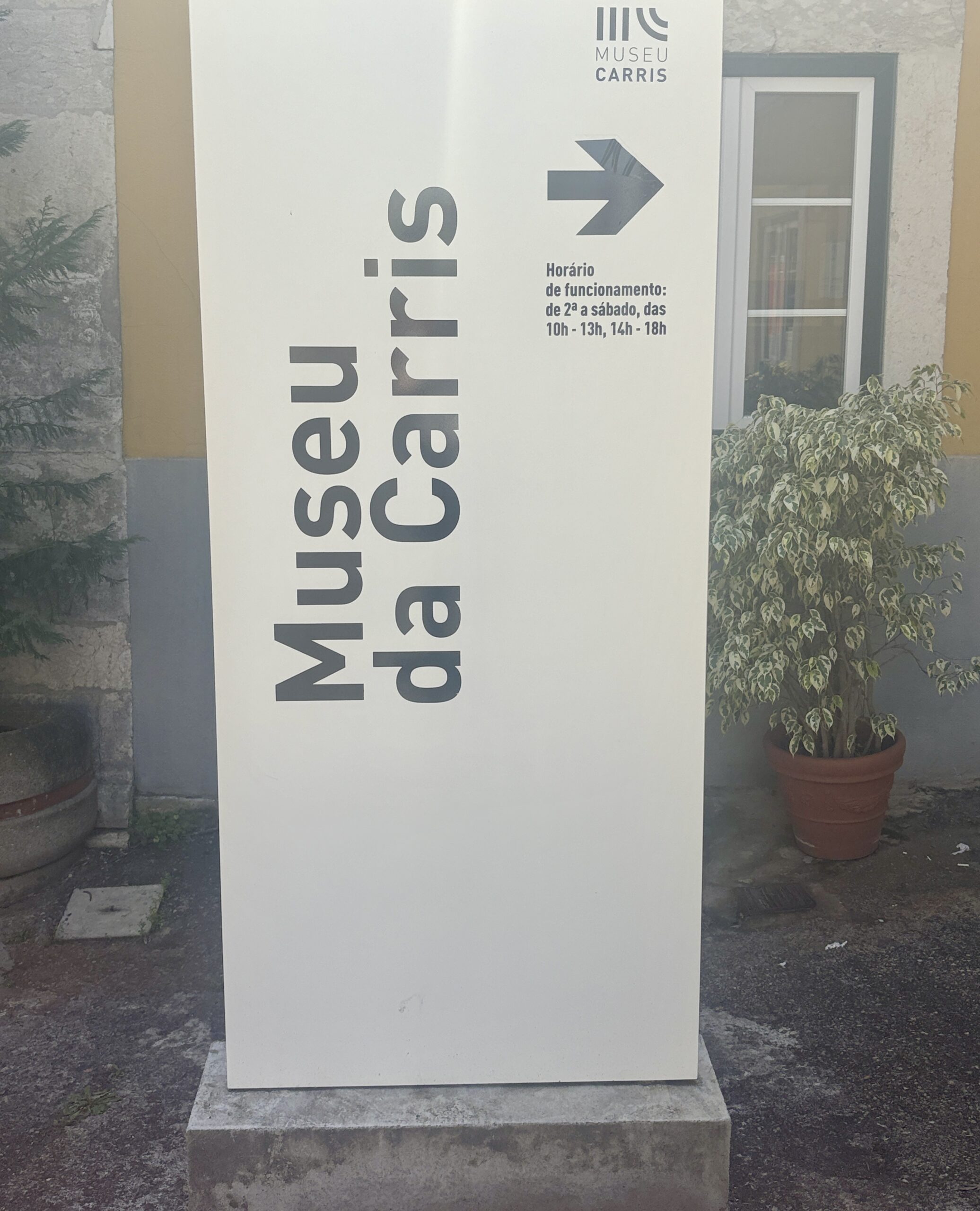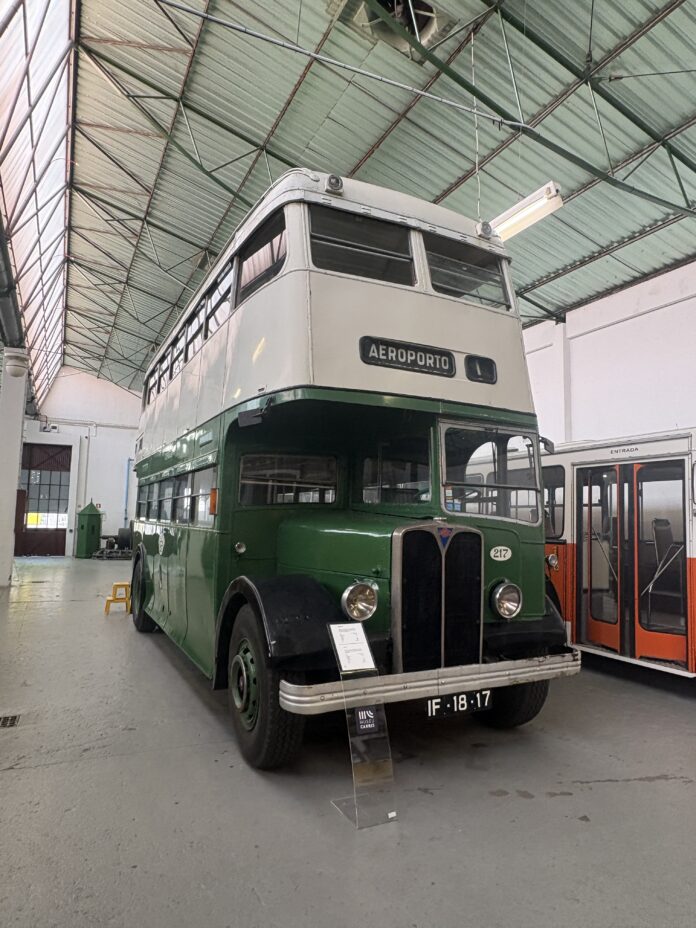The Museu da Carris gives visitors a fascinating glimpse into the history of Lisbon’s public transportation, housed in the former headquarters and workshops of Carris, the city’s transport company. This well-preserved museum combines historical exhibits with interactive experiences, which makes it a popular destination for train lovers, children, and anyone looking for a nice rainy day experience off the main tourist track.
History
The Carris Museum (Museu da Carris) showcases the rich history of public transport in Lisbon. The museum is located in what was originally the company headquarters, established when Carris acquired the former Palácio dos Condes da Ponte (residence of the Counts of Ponte) in 1873. The building is part of the Special Protection Zone that includes several structures in the area such as the Chapel of Santo Amaro, Burnay Palace, and Palácio Sabugosa.
The Companhia Carris de Ferro de Lisboa was founded in Rio de Janeiro, Brazil in 1872 and transferred its headquarters to Lisbon, Portugal in 1876. Its history can be broken down into three distinct phases: the “americanos,” horse-drawn cars pulled on rails, and the trams and the buses.
The initial phase of the “americanos” began in 1873 with the inauguration of the first route between Santos and Santa Apolónia. The second phase commenced in 1901 with the inauguration of the first electric tram route between Terreiro do Paço and Algés. By 1905, the entire network had been electrified, and the americanos had disappeared forever from the streets of Lisbon. The third phase, that of buses, began in the 1940s, and together with the tram cars, this phase continues to this day. The bus service was officially inaugurated on April 9, 1944, with six vehicles whose first service, even before the inauguration, was to reinforce the tram service for the Exhibition of the Portuguese World in Belém.
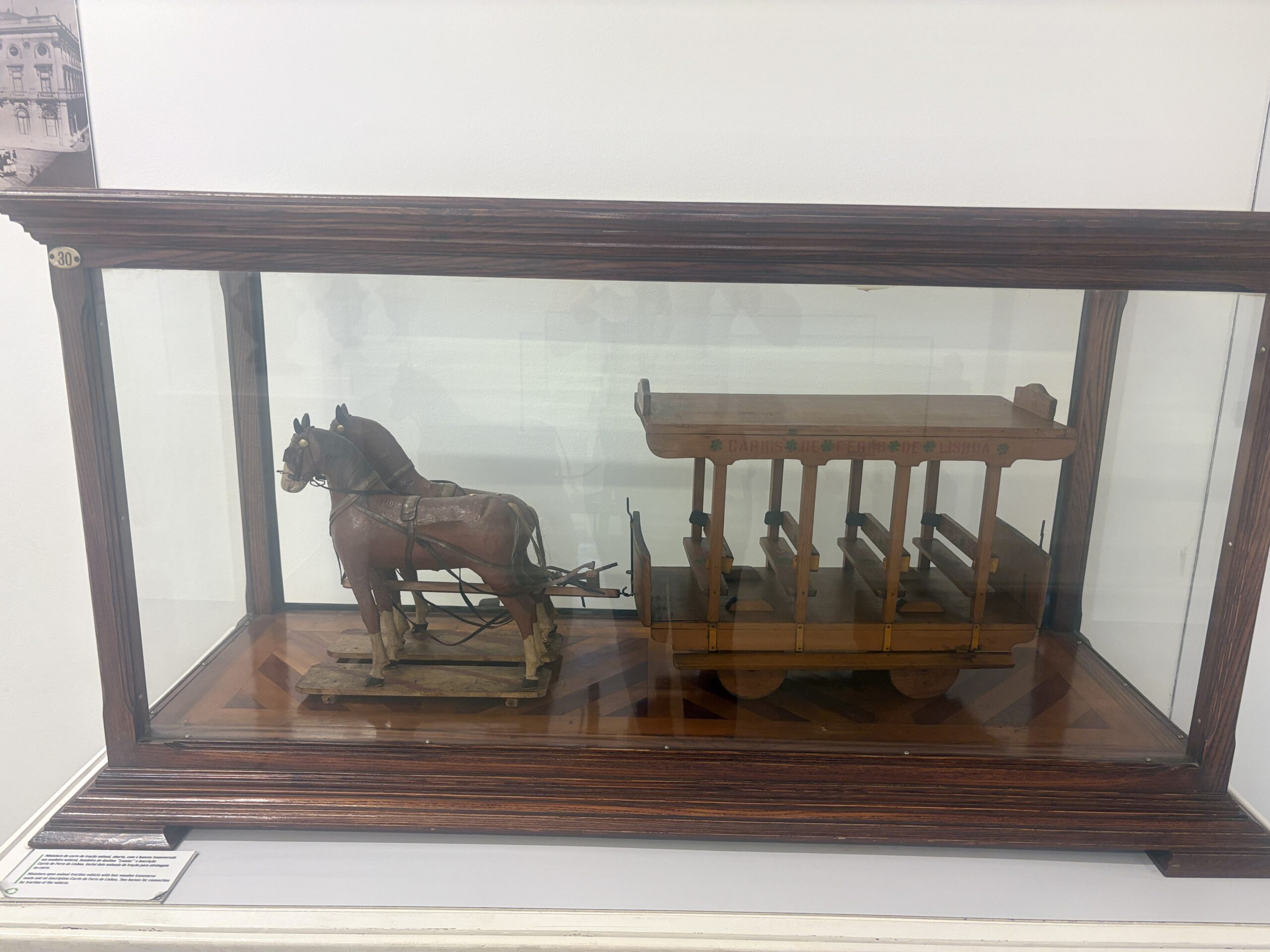
Officially inaugurated on January 12, 1999, the museum joined the Portuguese museum network in 2010 and cemented its status as an important cultural institution in Lisbon. The museum chronicles the evolution of public transportation in the city from horse-drawn trams at the turn of the century to electric trams and later buses and other modern vehicles. Carris also built the funicular railways that are still operating today, including Lavra (1884), Bica (1892), and Glória (1885), and purchased the Carmo Elevator, more commonly known as the Santa Justa Elevator, in the 20th century.
Architecture and Exhibits
The museum is strategically located on the north bank of the Tagus River in Alcântara, an area of Lisbon rich with cultural attractions including the Museum of the Orient, Ajuda National Palace, and the National Coach Museum. It operates within the Santo Amaro Depot, which continues to house Lisbon’s iconic trams. You can see many trains from the outside of the museum, but there are many more hidden in the many workshops that are part of the property.
The museum experience is divided into three main sections, with two occupying former workshops at the depot:
- Main Museum Area – Travel back in time and learn the history of Carris. The exhibits feature documents and objects used in daily operations, including tickets, uniforms, models of various vehicles, and reconstructed administrative areas including a medical center and instruments used in the Carris band.
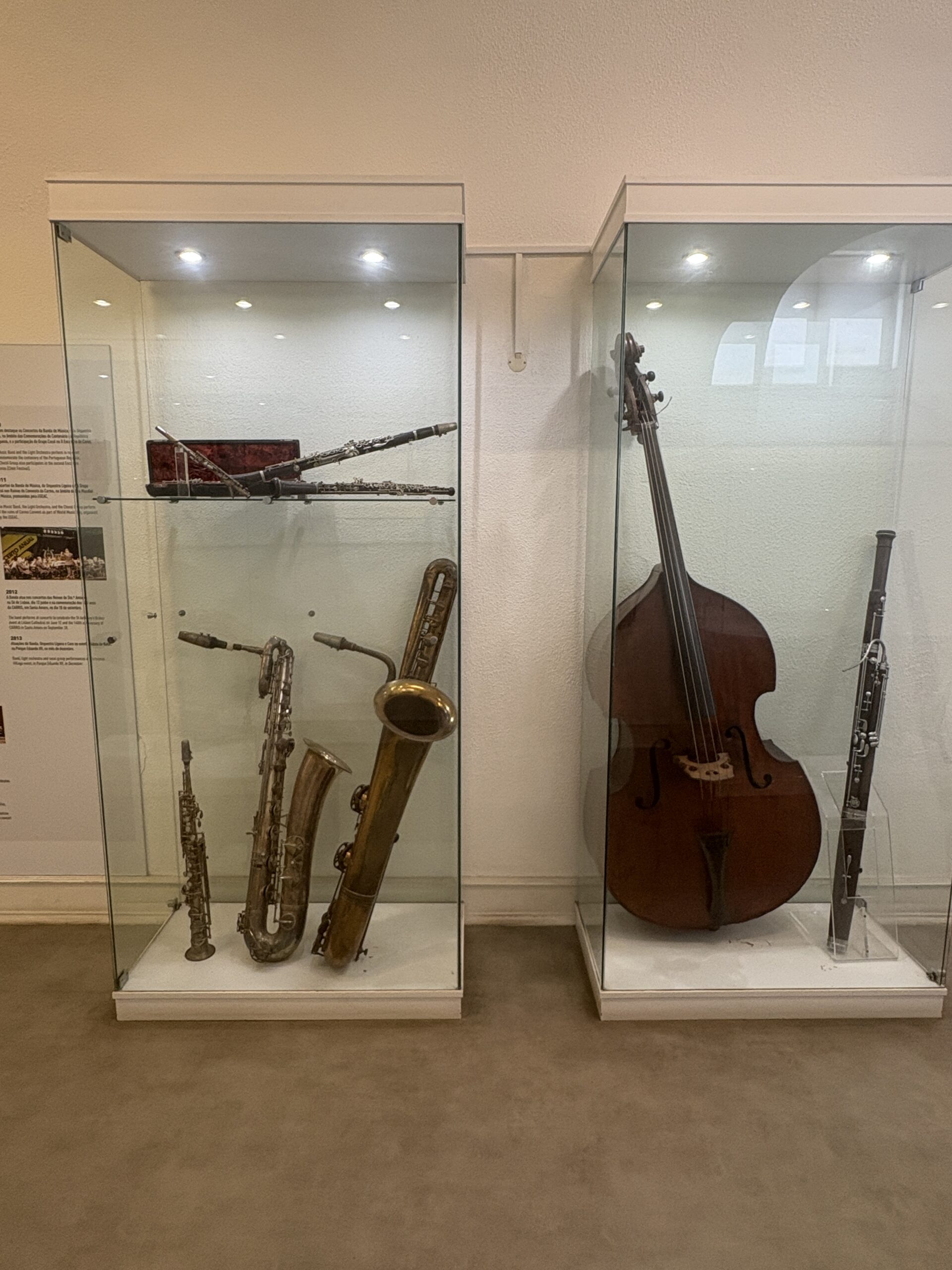
2. Vehicle Pavilions – Two pavilions house collections of preserved vehicles and workshop machinery. The first pavilion displays the original “americanos” – open-air vehicles pulled by horses from the late 19th century through the 1940s. The second pavilion features a reconstructed electric sub-station, a printing workshop with original equipment, and vehicles bridging the 1950s to present day. This is where you will get to see the Double Deckers!
3. Gallery and Additional Exhibits – A third section contains various working vehicles and buses waiting to be restored along with a gallery space for temporary exhibitions featuring paintings, sculpture, and photography.
One of the museum’s unique features is the historic tram ride connecting the main museum area with the vehicle pavilions. Visitors board a 1901 tram that was adapted for tourist services in the 1960s and take a fun three-minute ride to the next pavilion. Kids will absolutely love this!
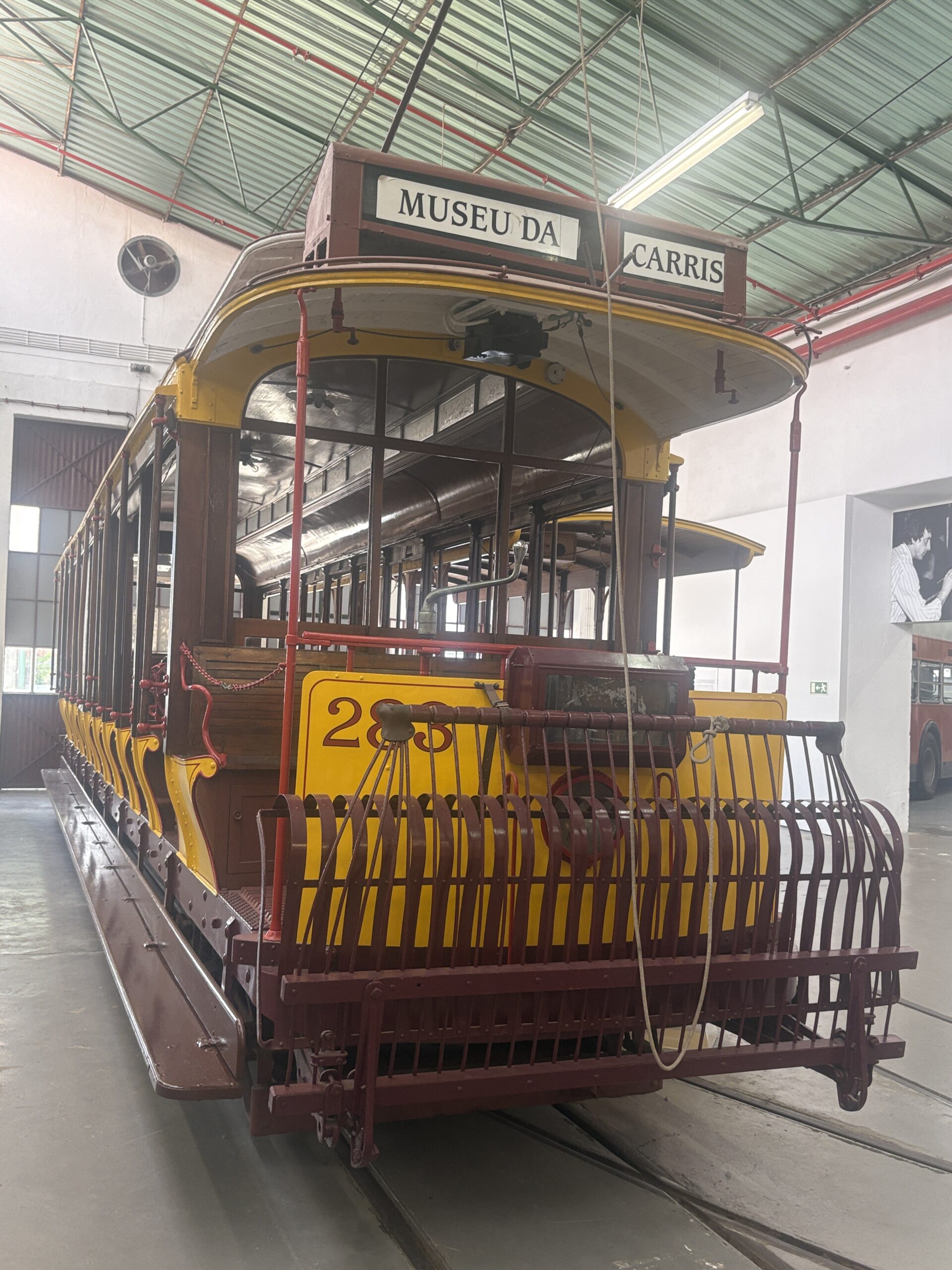
Times and Tickets
The Museu da Carris is located at R. 1° de Maio 101-103 in Lisbon’s Santo Amaro neighborhood. The museum is open Monday to Saturday from 10:00 AM – 1:00 PM and 2:00 PM – 6:00 PM. It is closed on Sundays and Holidays. Last entry is at 12:30 PM and 5:30 PM every day.
Entry for adults is €4.50, and children under 6 years old are free. Discounted rates of €2.50 are available for young people aged 6-18, seniors over 65, and unemployed people. The venue also provides various tour experiences, including non-guided tours (free for children up to 5 years and €2.50 for ages 6-18), guided tours for €3.50 (ages 4 and up), guided tours with games for €4 (ages 4 and up), and comprehensive guided tours with games and workshops for €5.50 (designed for children aged 4-15).
Final Thoughts
The Carris Museum is a wonderful morning or afternoon diversion for 60-90 minutes. It is perfect for kids or on a rainy day as almost all of it is inside including the covered train ride.
For those interested in the technical aspects of transportation, the museum also offers glimpses into not just the vehicles themselves but also the infrastructure that supported them including electrical supply equipment and printing presses used to create tickets and informational materials.
The museum’s documentation center provides resources for researchers interested in deeper exploration of Carris and public transport history. The Educational Service organizes guided visits, activities, workshops, and even children’s birthday parties (by reservation).
While you’re visiting the many attractions in the Alcântara and Belém districts, take an hour and learn more about the history of public transportation in Lisbon. Almost everything is available in both Portuguese and English. You will never emerge from this museum with a new appreciation of public transportation in Lisbon. Thank you, Carris!
